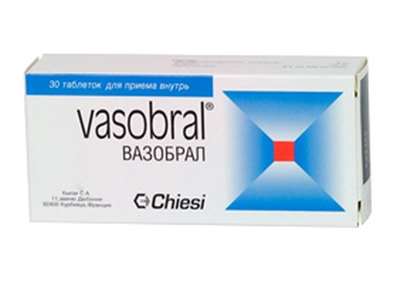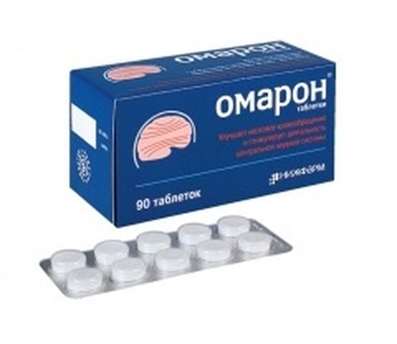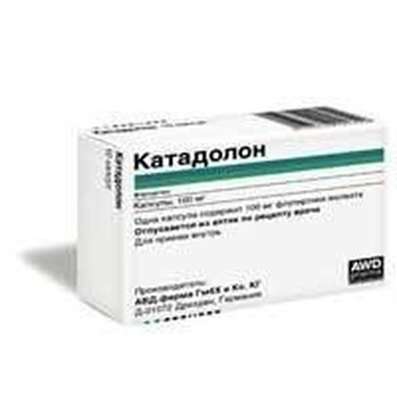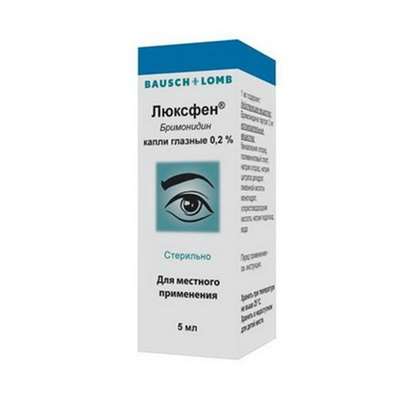Instruction for use: Momatee Rhino Advance
I want this, give me price
Active substance Azelastine+Mometasone
ATX code R01A Decongestants and other nasal preparations for topical use
Pharmacological group
Glucosteroids in combinations
H1-antihistamines in combination
Nosological classification (ICD-10)
J30 Vasomotor and allergic rhinitis
Allergic Rhinopatiya, Allergic rhinosinusopathy, Allergic respiratory diseases, Allergic rhinitis, nasal allergy, Seasonal Allergic Rhinitis, Vasomotor rhinitis, Long-allergic rhinitis, Perennial allergic rhinitis, Perennial allergic rhinitis, Year-round or seasonal allergic rhinitis, Year-round allergic rhinitis nature, Rhinitis allergic vasomotor, Exacerbation of pollen allergy in the form of Syndrome Rhinokonyunktivalnogo, Acute allergic rhinitis, Edema of the nasal mucosa, Edema of the nasal mucosa, Swelling of the mucosa of the nasal cavity, Swelling of the nasal mucosa, Swelling of the nasal mucosa, pollen disease, Permanent allergic rhinitis, rhinoconjunctivitis, rhinosinusitis,rhinosinusopathy, Seasonal allergic rhinitis, Seasonal Allergic Rhinitis, Haymarket rhinitis, Chronic allergic rhinitis, Allergic respiratory diseases
J30.2 Other seasonal allergic rhinitis
Allergic rhinitis seasonal, Seasonal rhinitis of an allergic nature
Composition
Spray nasal dosed 1 dose
Active substances:
Azelastine hydrochloride 140 μg
Mometasone furoate 50 mcg
Excipients: MCC (Avicel RC-591) - 0.91 mg; Carmellose sodium - 0.021 mg; Dextrose - 3.5 mg; Polysorbate 80 - 0.0175 mg; Benzalkonium chloride - 0.014 mg; Disodium edetate - 0.035 mg; Neotam - 0.0007 mg; Citric acid monohydrate - 0.0105 mg; Sodium citrate - 0.021 mg; Purified water - up to 70 mg
Description of dosage form
White or almost white suspension.
pharmachologic effect
Pharmacological action - antiallergic, antihistamine, glucocorticoid.
Pharmacodynamics
Azelastine hydrochloride, a derivative of phthalazinone, is an antiallergic remedy for long-term action. Azelastine is a selective H1-histamin blocker, has antihistamine, anti-allergic and membrane-stabilizing action, reduces capillary permeability and exudation, stabilizes the membranes of mast cells and prevents the release of biologically active substances (including histamine, serotonin, LT, platelet activating factor) , Causing bronchospasm and contributing to the development of early and late stage of allergic reactions and inflammation.
Mometasone furoate is a synthetic SCS (glucocorticosteroids) for topical application. Has anti-inflammatory and antiallergic effect when used in doses, in which no systemic effects occur. It inhibits the release of inflammatory mediators. Increases the production of lipomodulin, which is an inhibitor of phospholipase A, which causes a decrease in the release of arachidonic acid and, accordingly, inhibition of the synthesis of metabolic products of arachidonic acid-cyclic endoperoxides, PG (prostaglandins). It prevents the accumulation of neutrophils, which reduces inflammatory exudation and production of lymphokines, inhibits the migration of macrophages, leads to a decrease in the processes of infiltration and granulation. Reduces inflammation by reducing the formation of the chemotaxis substance (effect on the late stage of the allergy reaction), inhibits the development of an allergic reaction of an immediate type (due to inhibition of the production of arachidonic acid metabolites and a decrease in the release of inflammatory mediators from mast cells).
Pharmacokinetics
Azelastine hydrochloride. Bioavailability after intranasal application is about 40%. Cmax in the blood plasma after intranasal use is achieved after 2-3 hours. When administered intranasally in a daily dose of 0.56 mg azelastine hydrochloride, the average Css (equilibrium concentration) of azelastine hydrochloride in the plasma after 2 hours after ingestion is 0.65 ng / ml. Doubling the total daily dose to 1.12 mg results in a stable average plasma azelastin concentration of 1.09 ng / ml. However, despite the relatively high absorption in patients, systemic exposure after intranasal administration is approximately 8 times lower than after oral administration of a daily dose of 4.4 mg of azelastine hydrochloride, which is a therapeutic oral dose for the treatment of allergic rhinitis. Intranasal use in patients with allergic rhinitis causes an increase in the level of azelastine in blood plasma compared with healthy subjects. Other pharmacokinetic data were studied when administered orally. Relationship with blood proteins 80-90%. Metabolised in the liver by oxidation with the participation of the cytochrome P450 system with the formation of the active metabolite desmethylazelastine. It is excreted mainly by the kidneys in the form of inactive metabolites. T1 / 2 azelastine - about 20 h, its active metabolite desmethylazelastine - about 45 h.
Mometasone furoate. In intranasal application, the systemic bioavailability of mometasone furoate is <1% (with a sensitivity of 0.25 pg / ml). The suspension of mometasone is very poorly absorbed in the digestive tract (gastrointestinal tract), and a small amount of mometasone suspension that can enter the digestive tract after nasal inhalation is subjected to active primary metabolism before excretion with urine or bile.
Indication
Seasonal allergic rhinitis in adults (from 18 years).
Contraindications
Hypersensitivity to any of the components of the drug;
Recent surgery or nasal injury with damage to the nasal mucosa - until the wound is healed (due to the inhibitory effect of GCS (glucocorticosteroids) on the healing process);
Age under 18 years - due to the lack of relevant data.
With caution: tuberculosis infection (active and latent) of the respiratory tract, untreated fungal, bacterial, systemic viral infection or infection caused by Herpes simplex, with eye damage (as an exception, prescription of the drug is possible with the listed infections as directed by a doctor), the presence of an untreated infection with Involving the nasal cavity in the mucous membrane process.
pregnancy and lactation
Appropriately planned and well-controlled studies of the drug in pregnant women were not conducted.
Azelastine hydrochloride is able to cause toxicity during fetal development in mice, rats and rabbits.
The use of the drug during pregnancy and during breastfeeding is contraindicated.
Side effects
The incidence of side effects is defined as follows: very often (> 1/10); Often (<1/10,> 1/100); Infrequently (<1/100,> 1/1000); Rarely (<1/1000,> 1/10000); Very rarely (<1/10000).
From the side of the nervous system: often - headache, dysgeusia (unpleasant taste) as a result of improper application, namely, with excessive head deflection back during injection; Very rarely - dizziness (can be caused by the disease itself).
From the digestive tract (gastrointestinal tract): rarely - a sensation of irritation of the mucous membrane of the pharynx, nausea.
On the part of the respiratory system, chest and mediastinum: often - nosebleeds, discomfort in the nasal cavity (burning sensation, itching), ulceration of the nasal mucosa, sneezing, pharyngitis, sinusitis, upper respiratory tract infections.
From the immune system: very rarely - hypersensitivity, anaphylactoid reactions.
From the skin and subcutaneous tissues: very rarely - rash, itching, hives.
General disorders and disorders at the injection site: very rarely - fatigue, drowsiness, weakness (can be caused by the disease itself).
With prolonged use of GCS in high doses, it is possible to develop systemic side effects, incl. Glaucoma and cataract.
Interaction
Azelastine hydrochloride. In the intranasal application of azelastine, there is no clinically significant interaction with other drugs (drug).
Mometasone furoate. Combination therapy with loratadine was well tolerated by patients. At the same time, there was no evidence of any drug effect on the concentration of loratadine or its main metabolite in blood plasma. In these studies, mometasone furoate in the blood plasma was not detected (with the sensitivity of the method of determining 50 pg / ml).
Dosing and Administration
Intranasally. Inhalation of the suspension contained in the vial is carried out by means of a special dispensing nozzle on the vial.
1 dose of spray (azelastine hydrochloride - 140 mcg / mometasone furoate - 50 mcg) in each nostril 2 times a day in the morning and in the evening. Duration of treatment - 2 weeks.
Guidelines for using a vial with a dosing device
1. Remove the protective cap.
2. Before using the nasal spray for the first time, it is necessary to calibrate it by pressing the dosing device about 10 times. If the nasal spray has not been used for 7 days or longer, recalibration is necessary by pressing the dosing device about 2 times or until spray splashes appear. It is necessary to place the index and middle fingers on the sides of the nasal adapter, and the thumb to the bottom of the bottle and, making a breath through the nose, press. Do not pierce the nasal adapter. Do not spray into eyes when spraying.
3. Before use, clean the nasal passages as far as possible. Clamp one nostril, and insert the end part of the nasal adapter into the other, while holding the vial vertically. Quickly and abruptly push the adapter. Do not spray on the nasal septum.
4. Exhale through the mouth.
5. Repeat the steps described in step 3 for the other nostril.
6. Wipe the nasal adapter with a clean cloth and put on a protective cap.
Instructions for cleaning the nasal adapter
1. Remove the protective cap.
2. Carefully remove the nasal adapter by pulling it upwards.
3. Rinse the nasal adapter with cold water on both sides and dry. Do not use any auxiliary items (such as needles or sharp objects) to clean the adapter to avoid damaging it.
4. Rinse the protective cap with cold running water and dry.
5. Install the nasal adapter to its original position. Make sure that the stem of the vial is placed in the center of the nasal adapter.
6. Calibrate by pressing the metering device 2 times or until a fine dispersion begins to persist when pressed. Do not spray into the eyes.
7. Put the protective cap on.
Overdose
At present, there are no known cases of drug overdose with intranasal application.
Symptoms: in case of an overdose of azelastine as a result of accidental ingestion, there may be disturbances from the nervous system (drowsiness, confusion, tachycardia, hypotension).
Treatment: therapy of these disorders is symptomatic.
With prolonged use of GCS in high doses, as well as with the simultaneous use of several GCS, oppression of the hypothalamic-pituitary-adrenal system is possible. Due to the low systemic bioavailability of the drug, it is unlikely that an accidental or intentional overdose will require the taking of any measures other than observation with possible subsequent resumption of the drug at the recommended dose.
special instructions
As with any long-term treatment, patients who use the Momate Rhino Advance nasal spray for several months and longer should periodically check with the doctor for possible changes in the nasal mucosa, perforation of the nasal septum (very rarely), and the possible development of systemic side effects. In case of development of a local fungal infection of the nose or throat, it may be necessary to stop the therapy with the Momate Rhino Advance nasal spray and conduct special treatment. In the case of the development of persistent irritation of the nasopharynx, it is necessary to solve the problem of cessation of therapy.
Patients who switch to nasal spray therapy Momate Rhino Advance after long-term therapy with SCS systemic action, require special attention. The abolition of SCS systemic action in such patients can lead to an insufficient adrenal function, the subsequent recovery of which can take up to several months. In case of signs of adrenal insufficiency, the reception of systemic SCS should be resumed and other necessary measures taken.
During the transition from treatment of SCS systemic action to treatment with nasal spray Momate Rhino Advance, in some patients initial symptoms of cancellation of systemic SCS (for example joint and / or muscle pain, fatigue and depression) may occur, despite a decrease in the severity of the symptoms associated with the lesion The nasal mucosa; Such patients need to specifically convince in the advisability of continuing treatment with nasal spray Momate Rhino Advance. Transition from systemic to local SCS can also reveal allergic diseases, such as allergic conjunctivitis and eczema already masked by GCS therapy.
When using intranasal steroids at doses exceeding the recommended levels, or when used in sensitive patients at recommended doses, systemic effects of GCS and suppression of the adrenal glands may develop. If such changes occur, the use of the Momate Rhino Advance nasal spray should be phased out in accordance with the procedures adopted to stop oral glucocorticosteroids.
Patients undergoing SCS treatment have potentially reduced immune reactivity and should be warned about the increased risk of infection in case of contact with patients with certain infectious diseases (eg, chickenpox, measles) and the need for medical advice if such contact occurs .
When signs of severe bacterial infection (eg fever, persistent and sharp pain on one side of the face or toothache, swelling in the orbital or periorbital area), immediate medical attention is required.
SCS for nasal and inhalation use can cause the development of glaucoma and / or cataracts. Therefore, close monitoring of patients with vision changes, as well as patients who have previously noted increased IOP, glaucoma and / or cataracts should be carried out.
Impact on the ability to drive vehicles and engage in other activities. In rare cases fatigue, fatigue, dizziness and weakness, which may be a consequence of the disease itself, can develop with the use of the nasal spray Momate Rhino Advance. In such cases, you should avoid driving and working with complex machinery.
Form of issue
Spray nasal dosed, 140 mcg + 50 mcg / dose.
For 150 doses in a vial of HDPE, equipped with a dosing device and a nasal adapter with a protective cap. The bottle is placed in a cardboard box.
Conditions of leave from pharmacies
On prescription.
storage Conditions
In the dark place at a temperature of 15-25 ° C (do not freeze). (Do not freeze)
Keep out of the reach of children.
Shelf life
2 years.
Do not use after the expiry date printed on the package.

 Cart
Cart





